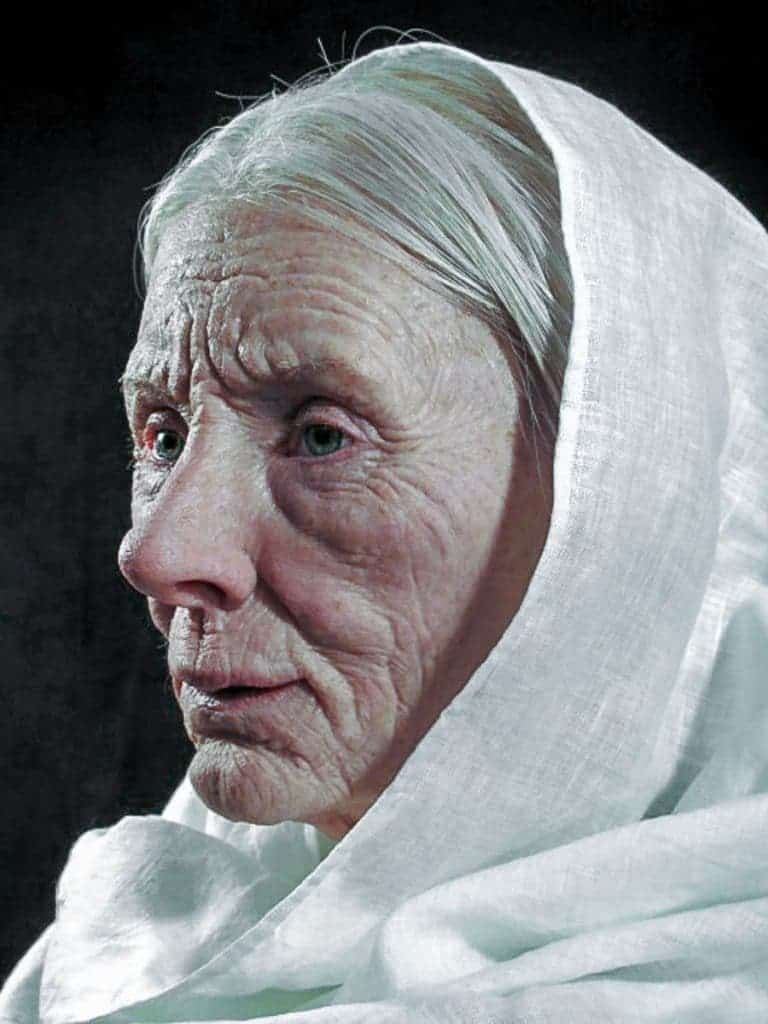What Oscar Nilsson loves most about this reconstruction isn’t that it looks eerily realistic, or that it was reconstructed with forensic precision — but rather that it was built using DNA information gathered by geneticists and osteologists at Stockholms’ University. We know for sure that this Viking Age man had blue eyes, light skin and strawberry blonde hair.
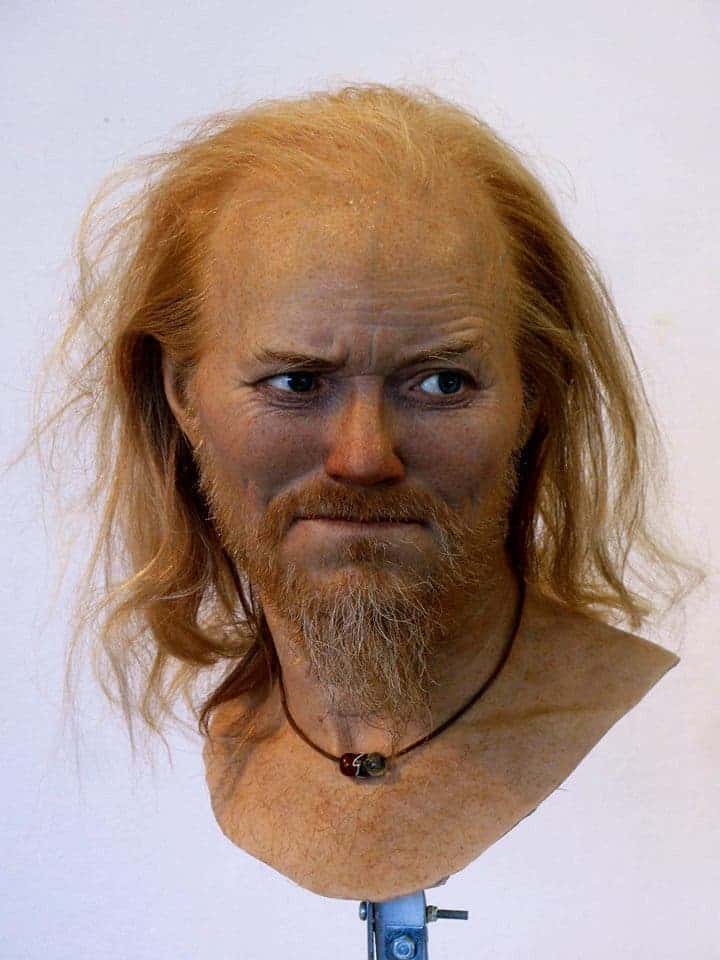
Facial reconstructions are a mixture of science and art. You need to draw from existing research about bone-muscle relationships, as well as other physiological cues, but you also need an artist’s eye and keen attention to detail. For Nilsson, one of the leading figures in his field, facial reconstructions are about more than just accuracy: they’re about capturing the essence of the time the people lived in.
“I tried to capture some of the mentality of the Viking era in his face; a violent time where alliances where so important but where easily betrayed,” Oscar told me in an email.
Some things can be deduced from things like bone structure, others can be reasonably inferred from the archaeological and cultural context, but the rest is, essentially, educated guesswork. This is especially true as Nilsson doesn’t shy away from challenging projects — like the reconstruction of a Neanderthal face.
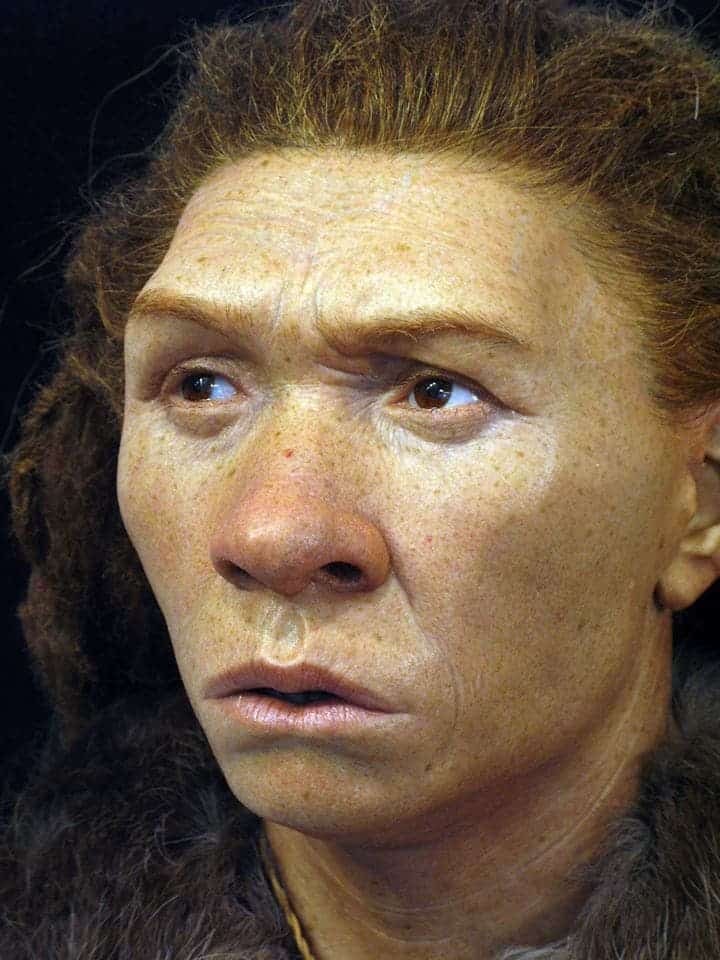
Nilsson recalls what he was thinking about this project.
“How “human” should this face appear? They were not Homo sapiens after all. I came to the conclusion that she must have a human glimpse in her eyes. As recent research shows, Europeans share around 2-4 % DNA with Neanderthals. So they must have been so much alike us, otherwise the offspring would not have been fertile.”
He also pondered how our idea of Neanderthals developed in the past years.
“It is interesting to see how the image of the Neanderthals has changed over the years: from being a drooling savage to a highly skilled competitor to us.”
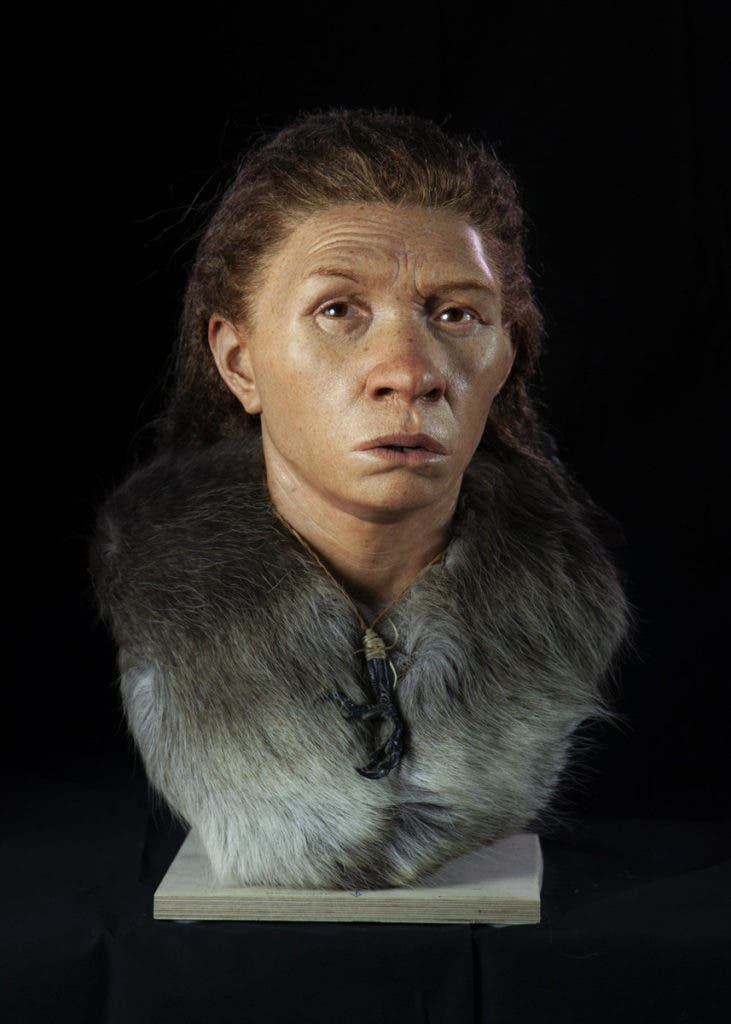
Another reminder from Nilsson’s work is how much our lives have changed in modern times. It’s extremely rare to find a very healthy medieval skeleton, without any visible wounds or malformations — this was the case with one of Nilsson’s recent subjects. Yet, even so, that dashing person didn’t live past the ripe age of 30.
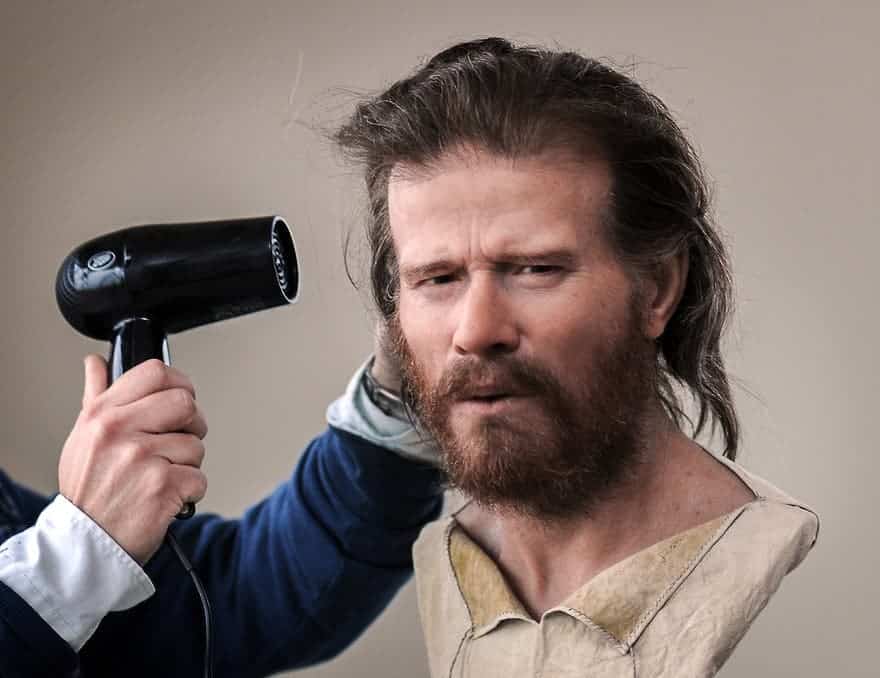
These reconstructions not only give a face to ancient humans, but they also make us think. For instance, Nilsson carried out facial reconstructions on people from the Whitehawk camp — one of the earliest habitation sites ever discovered in England. The remains of four complete burials were found near Brighton, in a Neolithic causewayed enclosure inhabited sometime around 2700 BCE. The findings include the bodies of an eight-year-old child and a young woman buried alongside the remains of a newborn child, as well as some other human bones. What’s so special about that?
Try to imagine what those people looked like. You probably didn’t think they were black, did you? Well, genetic analysis has revealed just that: Britain’s first inhabitants were black.
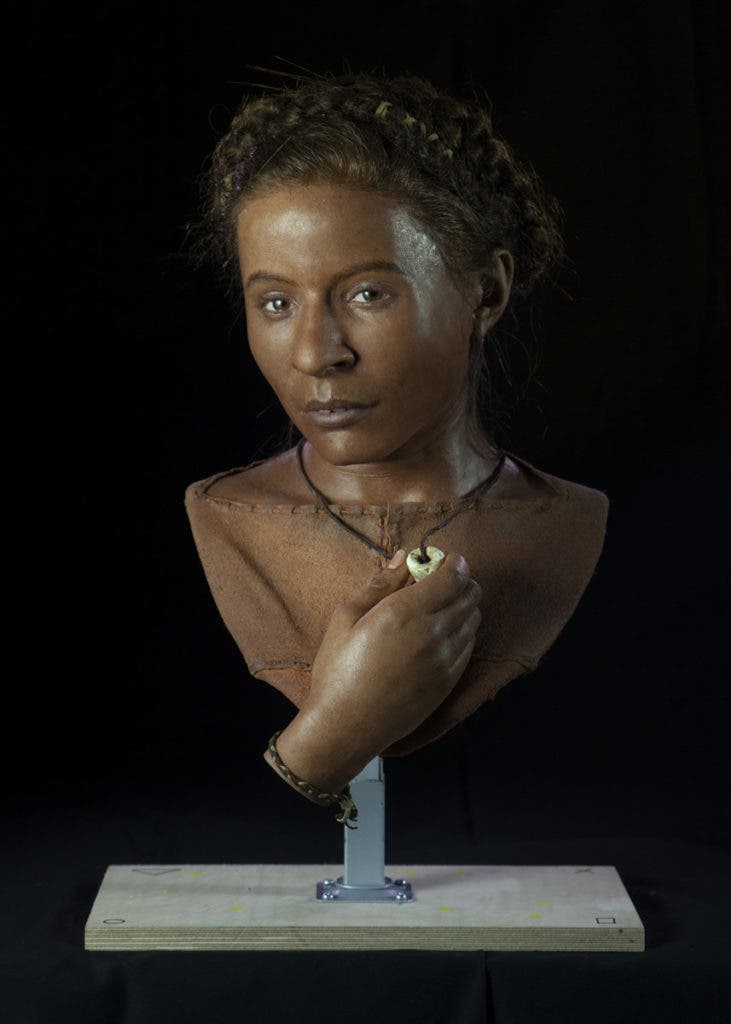
“I guess one of the news of scientific aspects was the fact one of them, the Whitehawk woman, was determined to have had dark skin through DNA-analysis. So the first Britons were black,” Nilsson concludes.
In the end, it’s hard to pinpoint just what makes Nilsson’s reconstructions so impressive. Perhaps, it’s not something anchored in science or in art, but rather in how he sees his subjects.
For instance, meet Estrid.
Nilsson describes Estrid and her environment thusly:
“Täby, Sweden, late Viking age: an old woman is buried. She is well respected; her family is rich and an important participant in the early Christian society in what later becomes Stockholm. 1 000 years later archaeologists discover her grave, and actually manages to identify her. She was Estrid, the grandmother of the famous Jarlabanke. Her family’s members and history is carved in stone; a number of rune-stones in the area gives us a unique picture of this late Viking age family.
It’s this type of imagery, this story-telling that blends in historical data with visual imagery that makes the work all that more special, and all that more useful to museums, historians, and of course, all of us.
It’s almost as if, in addition to all the scientific information and the artistic skill, Nilsson is giving his reconstructions something more: a soul. Perhaps that’s a bit too poetic — but at the very least, it helps us see the people behind the archaeology.
“The human face is a motif that never ceases to fascinate me: the variation of the underlying structure as well as the variety in details seem endless. And all the faces I reconstruct are unique. They are all individuals,” Nilsson concludes.
If you like Nilsson’s work and happen to pass through southern England, you can check some of his facial reconstructions at the Elaine Evans Archaeology Gallery, Brighton Museum & Art Gallery.
